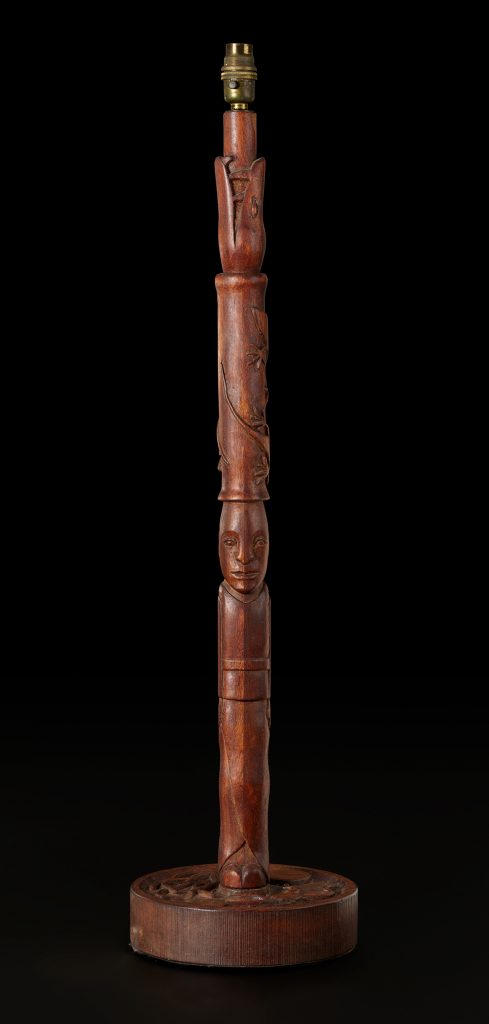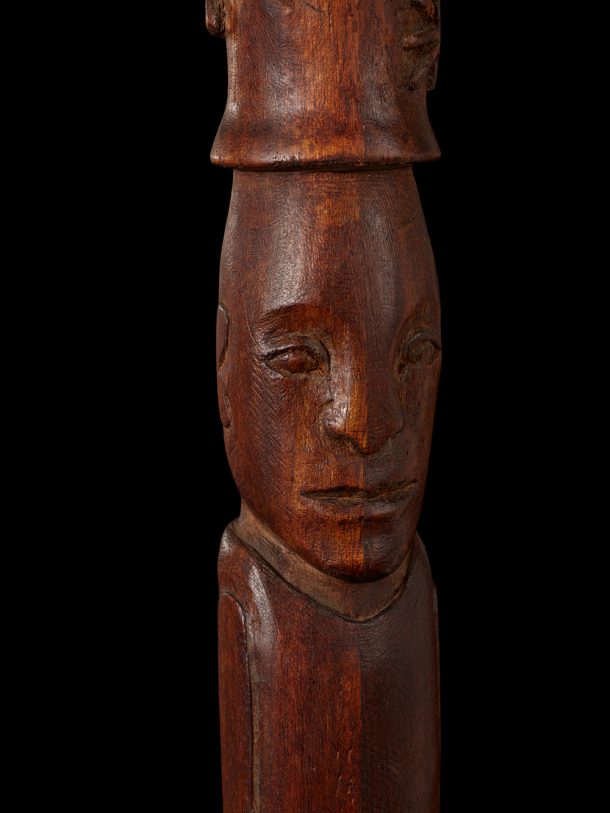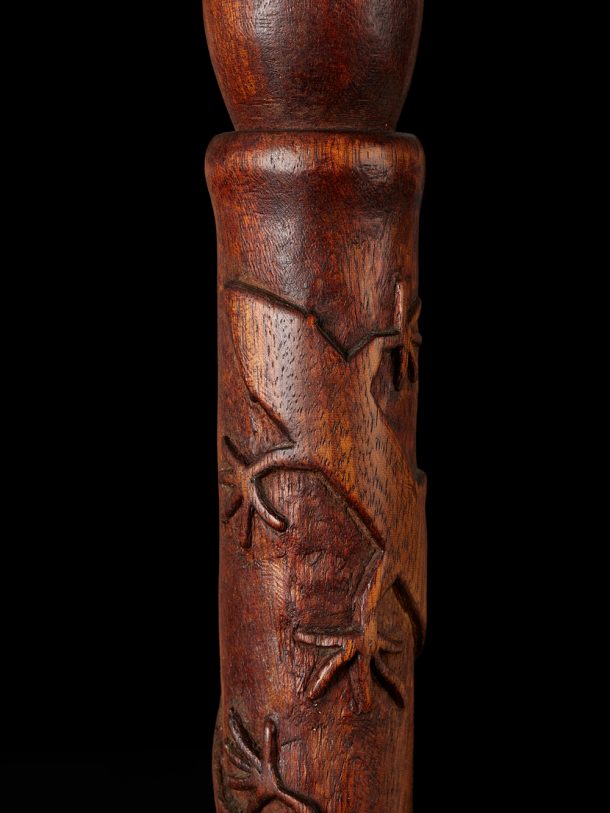This new acquisition by Jamaican-born artist, writer and broadcaster, Ronald Moody (1900 – 1984) can now be seen on display in the Design 1900-Now gallery, alongside works by Althea McNish and Huren Marsh.

Ronald Moody was born in Kingston, Jamaica in 1900 and arrived in Britain aged 23 on board the RMSP Oriana intending to study dentistry at the Royal Dental Hospital in London. Part of a group of writers, intellectuals and activists who came to be known as the Caribbean Artists Movement (CAM) he also wrote short stories, poetry and made a series of broadcasts for Calling the West Indies, produced by Una Marson for the BBC World Service in the 1940s. Described by cultural theorist and political activist, Stuart Hall, as ‘a bridge and link to the pre-Windrush sensibility of the black diaspora in Britain,’ his path to become an artist was unconventional. What lead a dentist to become a sculptor?
Moody was part of a prominent Jamaican family that included the anti-racist campaigner Harold Moody and bacteriologist Ludlow Moody. He had been interested in the arts from an early age, but decided to focus on the more conventional career of dentistry – until a chance visit to the Egypt Gallery at the British Museum changed everything. Inspired by what he saw, he taught himself to sculpt by experimenting with the plasticine and the plaster left over from his dental work, before moving on to sculpting wood.

In 1935, he completed his first oak sculpture of a head, Wohin (Whither) that was seen by two people who helped to shape his career: writer and biographer, Marie Seton (who bought the sculpture) and the Brazilian documentary film maker, Alberto Cavalcanti, who arranged for Moody to have a solo show in Paris in 1937. Moody produced several sculptures during this decade, including the elm figure, Johanaan (1935) and a larger than life-sized representation of a female head, Midonz (1937). Encouraged by his success, Moody moved to Paris, only to flee the city in 1940, two days before the invasion by German troops. Following a perilous journey through occupied France and across the Pyrenees into Spain, he eventually returned to England in October 1941, his health permanently damaged by the pleurisy he contracted on the way.
Moody’s work was influenced by his experience of war, European Modernism and decolonization, as well as the art and culture of Egypt, Greece, India and China. Commenting on how he incorporated these different influences in his work he said, ‘my past is a mixture of African, Asian, and European influences, and as I have lived many years in Europe, my present is the result of the friction of Europe with my past. This has not resulted in my becoming an ersztz European, but has shown what is valuable in my inheritance, which I think shows in my work’.
The lampstand, one of only three made, was carved between 1953 – 54. Moody had intended to sell them to a luxury goods shop, but the sale never materialised, which might explain why he did not continue to produce sculptures designed for use in the home. The lampstand is unusually tall and depicts a figure standing at its base, above which are two lizards, said to be inspired by one carved on an African oliphant, or bone hunting horn in Moody’s large collection of artefacts. At the top of the lamp the lightbulb holder is balancing in the jaws of a creature, possibly a snake. The base is carved with sea creatures: an octopus and starfish.

Moody’s niece, Cynthia Moody, who devoted much of her life to documenting and promoting her uncle’s work, owned the lampstand until her death in 2013. She bequeathed it to her close family friend Dr Ann Walmsley, an eminent historian and expert in Caribbean literature and art. Walmsley is the author of The Sun’s Eye (1968), a compilation of Caribbean stories and poems published by Longman, where she was their first editor of Caribbean-focused writing. Her PhD thesis, The Caribbean Artists Movement: Literary and Cultural History, 1966 – 1971, was published in 1992.
Walmsley was delighted to have been bequeathed the lamp, writing in a letter to Moody’s estate:
“The lamp has just arrived! […] It is even more beautiful than I remembered … Also, it is such a good, practical height for illumination with my reading and my writing … I could not have a more precious example of Ronald’s work … My heart is full of thankfulness for her [Cynthia Moody’s] amazing work on Ronald’s sculpture and work, for her friendship.”
The V&A was offered the lampstand by Walmsley’s estate and we are delighted to be able to display this sculptural, yet utilitarian, object from a pioneering figure in Jamaican art and culture.
From the 1950s until the early 60s, exhibitions in London helped to establish Moody on the British art scene, but did not generate enough income to enable him to abandon his dental practice entirely. In 1977, he received the Musgrove Gold Medal, Jamaica’s most prestigious cultural award and was awarded the Jamaica Institute Centenary Medal in 1980. In 1981 he was awarded the Minority Arts Advisory Service (M.A.A.S.) Award, London, for his outstanding contribution to sculpture. His fascinating archive is now held by Tate Britain.
Moody continued to produce sculptures during the 1970s but suffered from ill health in later life and died in London in 1984, aged 83. His final sculpture was Squatting Figure (1980).
Further reading
- Stuart Hall, ‘Black Diaspora Artists in Britain: Three ‘Moments’ in Post-War British History’, History Workshop Journal, No. 61 (Spring 2006), pp. 1-24 (4)
- Ronald Moody Talks Sculpting’, West Indian Gazette (November 1961), papers of Ronald Moody. Tate Archive TGA 956/8/2/24, quoted here.
- Letter from Anne Walmsley to Martin Walls. 14 December 2013. Anne Walmsley Papers. Correspondence with Trustees. Uncatalogued papers of Anne Walmsley. File TGA 201410. Tate Archive.

